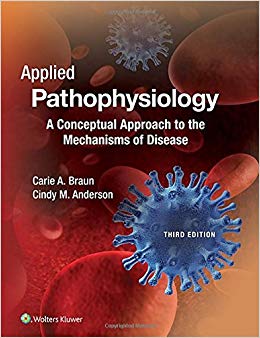
This novel approach helps students understand that diseases are rarely confined to one body system and challenges them to apply what they’ve learned to a range of diseases, rather than trying to memorize facts about specific conditions. In the process, they learn to think about pathophysiology in the same way practioners do in a clinical setting—by working from symptoms to the cause, rather than the other way around.
The 3rd Edition features much that is new including a new chapter on mental illnesses, new case studies in every chapter, and a wide range of new clinically-focused features.
- Updated Clinical models provide real-world examples of how pathophysiological concepts manifest themselves in the human body to help prepare students for practice.
- New Just-in-time review sections refer students to online student resources and remediation to refresh their understanding of prerequisite A&P and Microbiology material.
- New chapter-ending Case Studies (2-4 in every chapter) and related questions help students build critical thinking skills as they apply chapter material to real-world clinical scenarios.
- New! Pathology Up Close feature s provide more detailed coverage of the cellular and tissue changes that accompany disease.
- New! Clinical Practice feature s show students how they will apply what they are learning in real-world practice.
- A new Chapter 11 on altered mood, attention, and behavior disorders prepares students for the mental illnesses they will encounter in practice.
- Concept maps visually illustrate important interrelationships of key concepts, making it easy for students to visualize how things fit together.
- End-of-chapter learning tools include summaries, practice exam questions, and links to general web resources and chapter references.
- Discussion and Application sections in every chapter help students gauge their understanding of what they’ve studied.
- New! Links to online student resources are called out as appropriate to provide additional practice and review.
- Full-color figures and illustrations throughout the book clarify important concepts.
From the Labboxes help students understand common laboratory procedures and results.Stop and Considerprompts challenge students to think beyond the information presented in the textbook.
An integrative case study at the end of the book helps students apply the complex pathophysiologic concepts they’ve learned to a common condition—diabetes mellitus.

